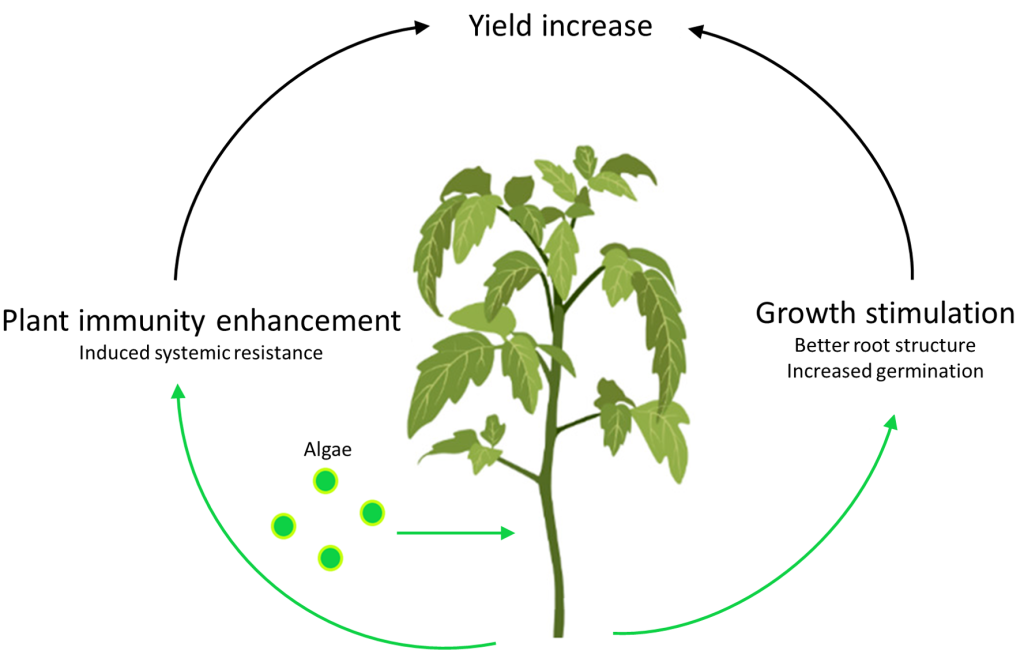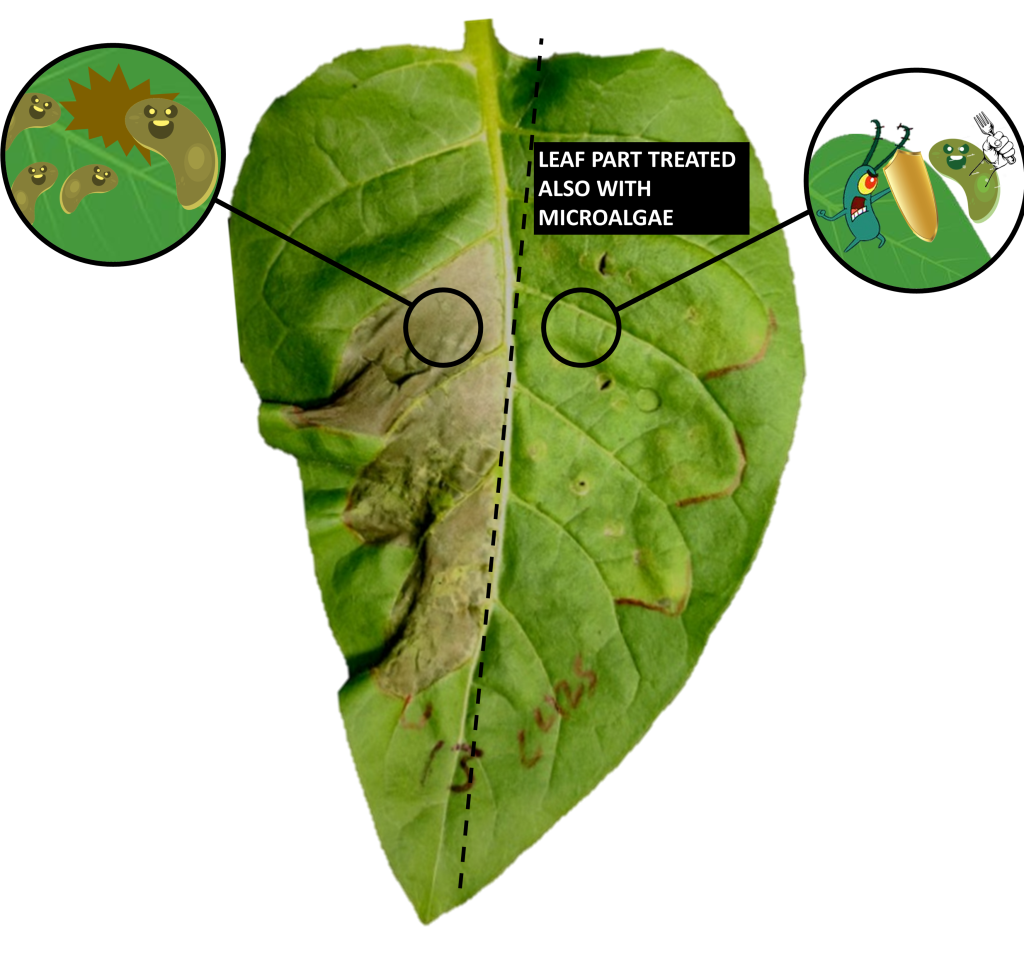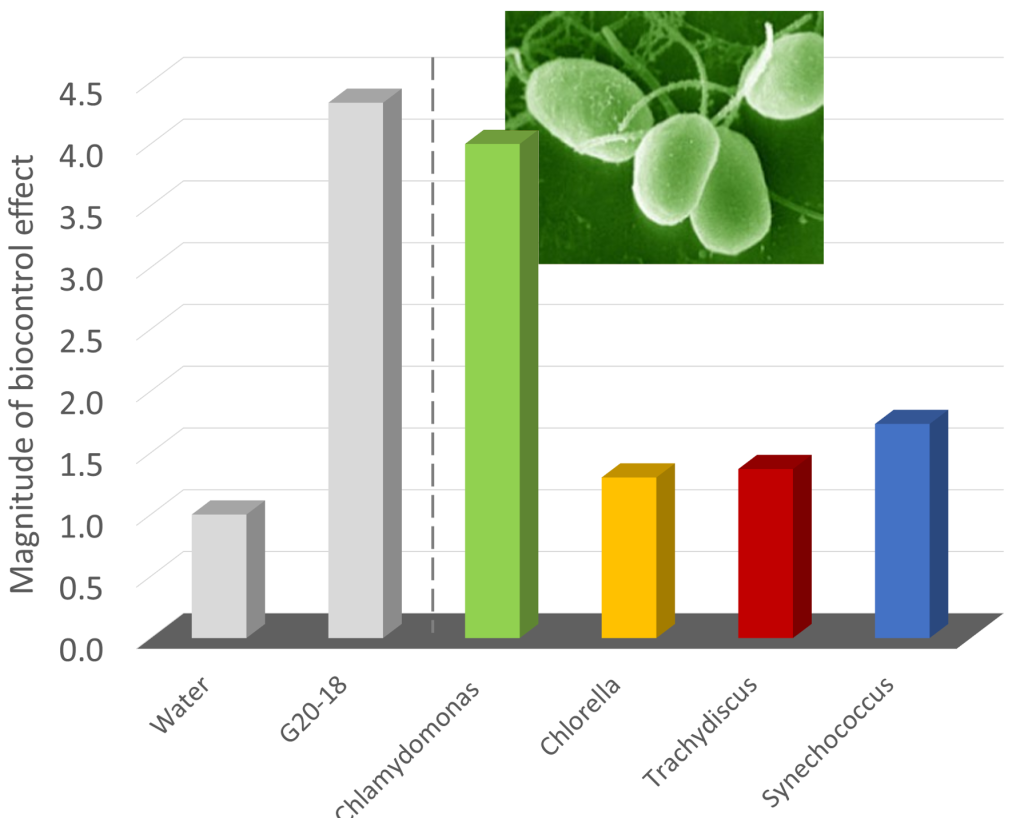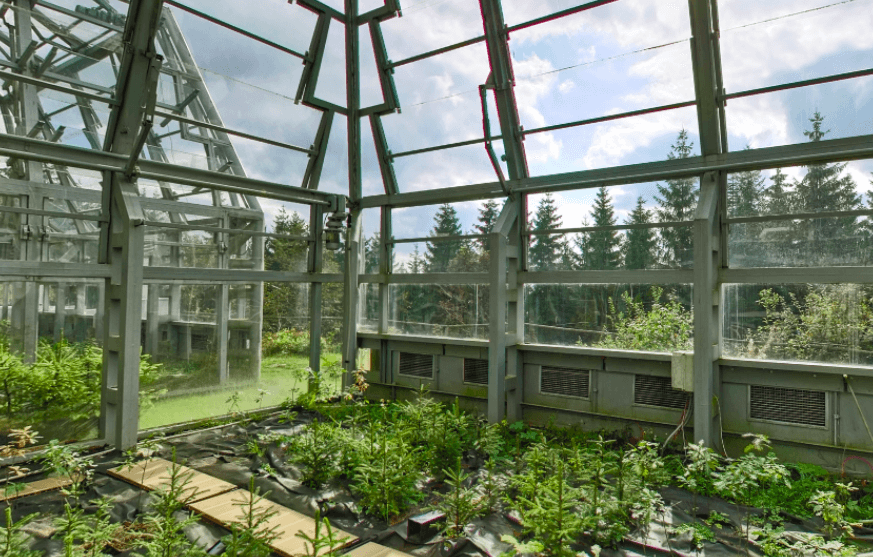Technological versus biological approach to agriculture
Biological control makes it possible to abandon technological (chemical) interventions with their adverse effects on human health and at the same time strengthen the resistance of crops to drought or disease. Using machine vision, it’s feasible to apply early detection of various plant stresses as well as use spatially precise fertilization or spraying. Biocontrol, in general, contributes to greater efficiency in precision farming and agriculture. Such technological approach is not opposed to the biological one, rather both can be used synergistically.
Biocontrol
Biological control is a method that, with the help of another living organism, regulates or eliminates unwanted pests and plant pathogens, while not posing a threat to the environment or humans. In addition to the direct action of the organism in use (e.g. predation), the stimulating effect of biological control on the production and immune system of the plant – the “host” – is often complemented.
Modern methods of biological control in agriculture include the use of microorganisms and, during recent years in particular, the interconnection of biocontrol properties of beneficial microorganisms with the possibility of their use as biofertilizers.
For example, the bacterium Pseudomonas fluorescens G20-18 is capable of producing plant hormones (cytokinins), which increase protective properties of plants or crops against bacterial pathogens. This effect has been successfully demonstrated on cultivated tobacco (Nicotiana tabacum) and thale cress (Arabidopsis thaliana).

The importance of microalgae in improving the growth and protection of agricultural crops
The ability to produce plant hormones has also been demonstrated in microalgae. The use of these photosynthetic microorganisms, rich in nutrient composition, in addition to the hormonal protective effect, would allow the reduction of the use of synthetic fertilizers by replacing with ecological microalgae biofertilizers.

Research of scientists at the Global Change Research Institute CAS
In collaboration with researchers from the Laboratory of Growth Regulators at Palacký University and CAS, and the Department of Plant and Environmental Sciences UCPH, the biocontrol effects of microalgae on cultivated tobacco and its natural bacterial pathogen Pseudomonas syringae pv. tabacii, which causes widespread bacterial dots of tobacco were studied. This type of pathogen is the cause of many diseases in agriculturally important crops, such as cucumbers, tomatoes and potatoes. To verify the protective effect of microalgae against spottedness, four types of microalgae have been tested compared to the beneficial bacterium Pseudomonas fluorescens G20-18. The results show a positive effect of alga Chlamydomonas reinhardtii, whose biocontrol activity leads to suppression of tobacco infection. In addition, laboratory experiments have shown the positive effects of using microalgal treatment that lead to improved germination and growth of several other plants. These results are waiting to be verified in the “field” practices.

Project partners





